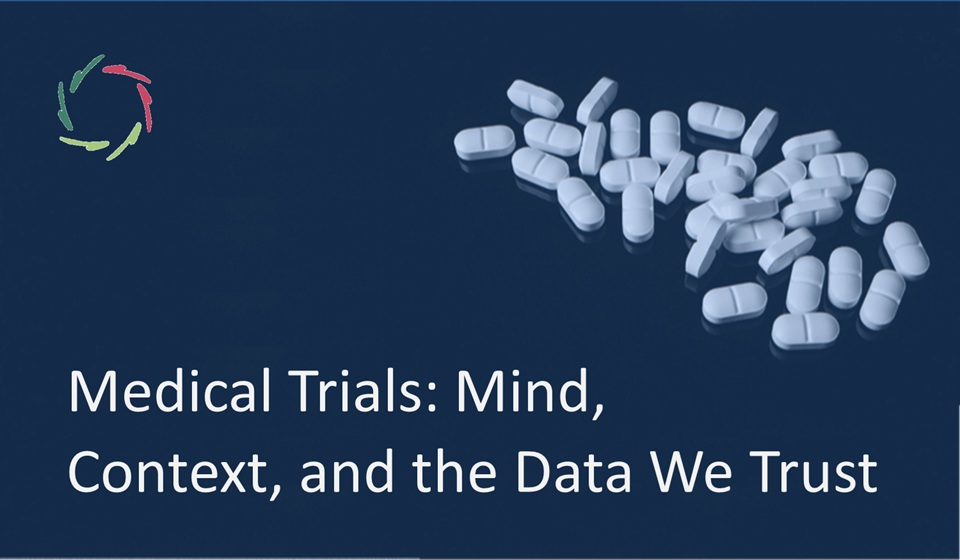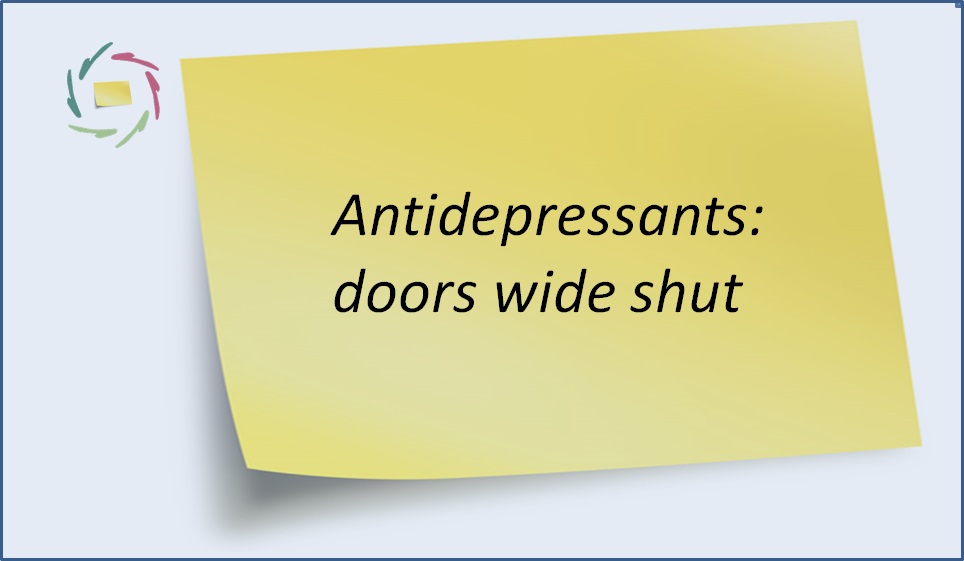Medical Trials: Mind, Context, and the Data We Trust

Trials aren’t simple. People aren’t simple. Our evidence shouldn’t pretend otherwise. Yet, much of medicine still treats the mind as noise, while the way people expect, hope, fear, cope, and interact with caregivers can significantly influence outcomes — sometimes a little, sometimes a lot.
This blog shows how mind and context shape outcomes — and how to measure and manage those forces without losing rigor. The result is evidence that’s fairer to patients and sturdier under scrutiny.
Why this matters now
Medical trials shape care, funding, and policy. Yet, behind their clean tables and p-values lies a very human reality: people with hopes, fears, side effects, rescue options, busy clinics, and subtle social cues. When we pretend trials are simple, we risk trusting numbers that don’t quite match lived experience.
This blog outlines a method for reading and conducting trials that respects human complexity without compromising diligence. For a clinical vignette that hints at this same theme, see the blog Rheumatic Arthritis and the Mind, and browse related posts in Your Mind as Cure.
Core message
Randomization balances the start. From there, mind and context take the wheel more than most designs admit. Expectations shift. Side effects reveal clues. Rescue medications kick in. Sites drift. Measurement thresholds turn small changes into big labels.
If we measure and manage these forces, trial results become both truer to patients and sturdier under scrutiny.
Expectations are not noise
A positive expectation can lift outcomes; a negative one can drag them down. Beyond the familiar placebo and nocebo, there’s a quieter cousin: lessebo. When people are aware that a placebo arm exists, overall responses can dampen – also in the active arm – shrinking the apparent drug–placebo gap. One can see this indirectly across many programs and eras. The fix isn’t to hide context. It’s to standardize it, make it ethical and open, and model it as part of science.
Expectations aren’t just ideas; they’re bodily. For instance, language, tone, and the perceived relationship with staff alter stress physiology, adherence, and the way symptoms are perceived and reported. That’s why two arms treated ‘the same’ on paper still drift apart in practice.
For a tabled map of where expectation, lessebo, and communication tone can bend results in either arm, see addendum: Factors that tilt outcomes in double-blind trials.
Blinding often leaks
‘Double-blind’ is a promise, not a guarantee. As weeks go by, participants and clinicians often guess the allocation — sometimes because the active drug has recognizable side-effects, sometimes because improvements (or the lack of them) speak louder than consent forms. Once a belief forms – “I’m on a drug” or “I’m on a placebo”– it can change adherence, rescue requests, and how outcomes are rated. If we never ask who believes what, we never see this invisible bend in the results.
A simple remedy is to ask, briefly and repeatedly, at each visit: which treatment do you think you’re receiving (drug, placebo, don’t know), how confident are you, and what do you expect by the next visit? Use those answers as time-varying covariates and show an expectation-adjusted effect next to the raw one. Readers can then see how much the mind tilted the outcome. This is the STAT approach (Serial Treatment Assumption Testing) in a nutshell — (relatively) lightweight to run, heavy on insight. For more, see my science article about STAT.
Rescue, crossover, and the estimand behind the headline
Most trials allow rescue or escape: if a participant is still performing poorly at week X, the protocol intensifies care. This is ethical and unavoidable. It also means your headline effect depends on how you count what happens after rescue. Are you treating rescue as non-response? As part of usual care (treatment policy)? Are you analyzing only while on assigned treatment? Or imagining a hypothetical world without rescue? Those choices define the estimand — the very quantity your result estimates.
There isn’t one ‘right’ choice. There is a right practice: pre-declare the estimand, handle rescue consistently, and run sensitivity analyses (including tipping-point checks). When trials do this transparently, clinicians and patients can match the number they’re reading to the question they actually care about.
Measurement is not trivial
Responder labels like ‘RCA20% better’ are useful and also nonlinear. A small change in a patient-reported outcome can tip someone over a threshold without meaningfully touching inflammation or function. The reverse can happen at higher thresholds. Rater variability matters too: joint counts, neurological exams, even imaging reads have calibration drift.
Good trials mix continuous measures with responder thresholds, retrain raters, and, when possible, centralize readings. Better trials report how robust the conclusions are when you model measurement differently.
Site effects and co-intervention drift
Trials don’t happen in a vacuum. Sites differ in recruitment waves, clinician habits, local co-care (physiotherapy, over-the-counter painkillers), and how faithfully visit windows are kept. Rescue cascades differ by site. These differences usually add noise and occasionally cause an arm to tilt.
Stratifying randomization by site helps. So does modeling site as a random effect, standardizing scripts, auditing visit timing, and actually training for communication tone. When results hold up under site-adjusted models, trust also increases.
Side-effect unblinding cuts both ways
Perceiving drug-like side effects can boost the sense of being on the active treatment, which lifts expectations and adherence. It can also lead to dose reductions, interruptions, and discontinuations — harming measured efficacy. That’s why reasons for discontinuation should be gathered, coded if possible, and reported by arm and time, not just total counts.
Pair that with the repeated belief checks, and you can examine outcomes by who thought they were on the drug versus the placebo. It’s not about catching anyone out. It’s about learning what really happened.
Make context a first-class citizen
What if we stop treating ‘context’ as background noise and test it as real co-treatment? How-to:
- Add a Context Arm to the usual drug versus control design: an open, ethical package that optimizes mind and setting without deception.
- Think clear purpose framing; neutral, equipoise-consistent language; compassionate contact; brief autosuggestion cues; simple, daily rituals for adherence; and consistent visit routines that minimize nocebo.
- Measure the Context Arm’s effect on its own, and then – optionally – pair it with the active treatment to test synergy.
This makes the helpful force we all intuit tangible, replicable, and improvable.
Transparency norms we can adopt right now
Every trial can undergo a few upgrades without altering its essence:
- Declare, in plain language, the design context (placebo versus active comparator; add-on versus switch), rescue rules, and the estimand.
- Record and report blinding integrity with STAT-style prompts.
- Show an expectation-adjusted effect next to the raw one.
- Track and report reasons for discontinuation by arm and time.
- Model site as site, not as invisible noise.
- Use continuous and responder outcomes side by side.
These aren’t bureaucratic extras. They are small lights in dark corners that make the whole room clearer.
Pragmatic does not mean sloppy
There’s a false choice between antiseptic RCTs and real-world messiness. We can have rigor and reality — by designing for complexity instead of pretending it away. This means conducting pragmatic trials with careful comparators, pre-registering the handling of intercurrent events, measuring expectations, and using standardized communication. It also means learning from day-to-day care and coaching on a large scale.
Lisa can carry that last part forward while mentally coaching in a separate program; this blog stays focused on making every medical trial more trustworthy.
How Lisa fits into this work
Complexity isn’t a bug. It’s the human condition.
Lisa can, in principle, participate in any medical trial. Her envisioned role is to operationalize mind-and-context rigor so that it becomes a repeatable practice, rather than just good intentions. That includes ready-to-use STAT prompts and dashboards, a simple Context Arm package, neutral scripts for team training, rater calibration kits, site-effect modeling templates, and expectation-adjusted analyses.
Teams keep their autonomy. Lisa keeps them honest about things that matter but often go unmeasured.
How to read results tomorrow morning
When the next trial lands on your desk, pair the effect size with five checks:
- What was the design context?
- How did the team handle rescue and discontinuation—and what estimand did that imply?
- Did they measure and report blinding integrity or expectations?
- Do patient-reported outcomes, function, and biomarkers point in the same direction?
- Were site effects considered?
Those questions take minutes to ask and save years of confusion.
Forwarding science
Openness, depth, respect, freedom, trustworthiness — these aren’t just values for clinical encounters. They are also design choices for science. When we acknowledge mind and context, measure them, and design with them in mind, our evidence becomes more human and more reliable at the same time.
That is the kind of data we can trust.
―
Addendum
Factors that tilt outcomes in double-blind trials (placebo vs active)
[SCROLL horizontally to see all five columns. Note also that this table is quite heavy.]
| Factor | Mechanism (what actually happens) | Likely bias in outcomes* | What to pre-specify / check | Practical mitigations |
| Expectation context (placebo / nocebo / lessebo) | The possibility of placebo dampens responses; negative framing amplifies symptoms; positive framing lifts them. | Often shrinks Δ (active−placebo). Can push both arms down (lessebo). | Neutral / equipoise scripts; measure expectations each visit (e.g., STAT); predefine how expectations enter models. | Use add-on or active-comparator designs where feasible; train staff in neutral language; analyze expectation-adjusted effects. |
| Side-effect unblinding | Perceived AEs cue “I’m on drug,” altering adherence, hope, reporting; AEs also cause dose cuts/dropouts. | For active via expectancy; against active via AE-related discontinua-tions / dose reductions. | Repeated blinding checks; reasons / timing of discontinuations; dose-intensity exposure. | Consider active placebos (when ethical); collect STAT; sensitivity analyses by “believed allocation.” |
| Rescue / escape rules | Protocol triggers step-up when control is inadequate; usually more in placebo. | Against placebo (more non-response / censoring), sometimes shrinks Δ via added co-treatment. | Clear estimand (treatment-policy vs while-on-treatment vs composite vs hypothetical); rescue thresholds / timing. | Pre-register handling; show rescue rates / time; run sensitivity suites (incl. tipping-point). |
| Concomitant / background meds | Allowed/stable meds diverge post-randomization (e.g., more add-ons in placebo). | Typically toward placebo (improves placebo arm) → reduces Δ. | Con-med rules; washout windows; CRF/ePRO tracking; per-visit checks. | Enforce stability; model con-meds; per-protocol sensitivity; transparent reporting. |
| Discontinua-tions / dropouts | More for inefficacy (often placebo) or AEs (often active). Handling changes effect size. | Against the arm with higher dropout under NRI/ITT; inflates variance. | Reasons by arm / time; pre-declared missing-data strategy; competing-risk/KM plots. | Multiple imputation / MMRM; NRI + sensitivity; exposure–response analyses. |
| Rater variability & nonlinear endpoints | Joint counts, scales, composites have thresholds; tiny PRO shifts flip responder status. | Can favor either arm; adds noise; distorts responder rates. | Rater training / certification; dual / central reads; collect continuous outcomes alongside responder status. | Use mixed models on continuous endpoints; calibrate raters; audit outliers. |
| Site effects & co-intervention drift | Different recruitment waves, local habits, physio / OTC use; rescue cascades vary by site. | Unpredictable; often reduces Δ by adding heterogeneity. | Stratify by site; monitor site trends; pre-specify site as random effect. | Re-train sites; standardize co-care scripts; site-level sensitivity analyses. |
| Era effects (rising placebo) | Placebo responses have trended upward in several areas over time. | Against Δ (smaller differences in newer trials). | Record trial year; plan meta-regression by era in syntheses. | Interpret cross-era comparisons cautiously; contextualize with historical controls. |
| Adherence & visit timing | Perceived benefit / AE profile changes adherence and timing; missed visits alter who is assessed. | Bias either way; can inflate placebo (short-term relief) or deflate active (missed doses). | Adherence metrics (pill counts, levels); visit windows; pre-analysis flags. | Reminders / monitoring; model adherence; per-protocol sensitivity. |
| Communic-ation tone / clinician behavior | Warmth, time, clarity, and validation shift outcomes (contextual healing). | Can lift both arms; if uneven, tilts results. | Standardize scripts/visit structure; log contact time. | Training; fidelity checks; consider a Context Arm to quantify effects. |
* “Likely bias” = typical direction under common handling; specifics depend on the estimand, timing, and analysis choices.
Glossary (terms and acronyms)
- Active comparator — A trial arm using another active treatment instead of placebo.
- Add-on design — New treatment added on top of stable background therapy (vs switching).
- AE / SAE — Adverse event / serious adverse event.
- Blinding integrity curve — The plot over time of who believes they’re on drug/placebo/don’t know (from STAT data).
- Composite estimand — Treats certain intercurrent events (e.g., rescue) as non-response by definition.
- Context Arm — An open, ethical package that standardizes and optimizes helpful context (communication, rituals, support) as a tested co-treatment.
- CRF / ePRO — Case report form / electronic patient-reported outcomes; standardized ways to capture trial data.
- Estimand — The precise treatment effect a trial aims to estimate, including how intercurrent events (like rescue) are handled.
- Expectation-adjusted effect — Primary effect size re-estimated with expectation/blinding covariates included (from STAT).
- Hypothetical estimand — Models what the effect would be in a world where the intercurrent event did not occur.
- KM — Kaplan–Meier; time-to-event curve (e.g., time to discontinuation) possibly with competing-risk methods.
- Lessebo — Dampening of outcomes (even in active arms) caused by the mere possibility of receiving placebo.
- MedDRA — Standardized dictionary for coding adverse events.
- MI — Multiple imputation; statistical filling-in of missing data under explicit assumptions.
- MMRM — Mixed-effects model for repeated measures; analyzes longitudinal continuous outcomes without simple imputation.
- Neutral/equipoise script — Standardized wording that avoids biasing expectations toward or against any arm.
- NRI — Non-responder imputation; missing or rescued cases are counted as non-responders in responder analyses.
- PRO — Patient-reported outcome (e.g., pain, fatigue, global assessment).
- Random effect for site — Modeling sites as a random factor to account for between-site variability.
- Rater calibration / central reading — Training or centralized assessment to reduce measurement variability across raters/sites.
- Rescue / escape — Protocol-defined step-up (e.g., steroids, dose change) when control is inadequate.
- Side-effect unblinding — Loss of blinding because drug-like AEs tip participants/clinicians off about allocation.
- STAT — Serial Treatment Assumption Testing: repeated checks of perceived allocation, confidence, and expectations during the trial.
- Tipping-point analysis — Sensitivity analysis showing how strong missing-data or rescue assumptions must be to overturn the result.
- Treatment-policy (ITT) — Estimand/analysis counting outcomes regardless of rescue or discontinuation (the classic “intention-to-treat” stance).
- While-on-treatment — Estimand using data up to discontinuation or rescue (not after).


